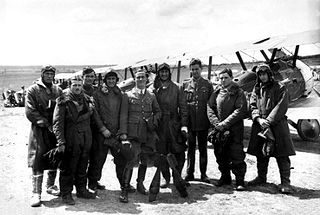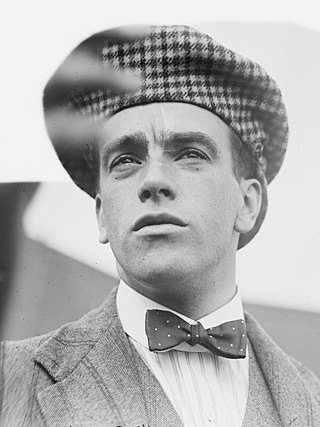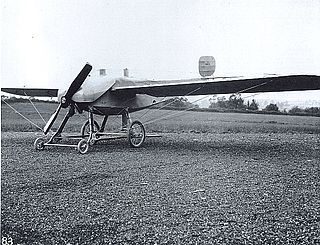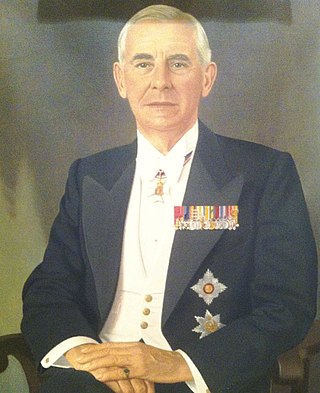Related Research Articles

The Royal Naval Air Service (RNAS) was the air arm of the Royal Navy, under the direction of the Admiralty's Air Department, and existed formally from 1 July 1914 to 1 April 1918, when it was merged with the British Army's Royal Flying Corps to form the Royal Air Force (RAF), the world's first independent air force.

The Royal Aero Club (RAeC) is the national co-ordinating body for air sport in the United Kingdom. It was founded in 1901 as the Aero Club of Great Britain, being granted the title of the "Royal Aero Club" in 1910.

This is a list of aviation-related events from 1912:
This is a list of aviation-related events from 1914.

Gustav Wilhelm Hamel was a pioneer British aviator. He was prominent in the early history of aviation in Britain, and in particular that of Hendon airfield, where Claude Graham-White was energetically developing and promoting flying.

Wolvercote is a village that is part of the City of Oxford, England. It is about 3 miles (5 km) northwest of the city centre, on the northern edge of Wolvercote Common, which is itself north of Port Meadow and adjoins the River Thames.

Eugene Jacques Bullard was one of the first black American military pilots, although Bullard flew for France, not the United States. Bullard was one of the few black combat pilots during World War I, along with William Robinson Clarke, a Jamaican who flew for the Royal Flying Corps, Domenico Mondelli from Italy, and Ahmet Ali Çelikten of the Ottoman Empire. Also a boxer and a jazz musician, he was called "L'Hirondelle noire" in French.

The Australian Flying Corps (AFC) was the branch of the Australian Army responsible for operating aircraft during World War I, and the forerunner of the Royal Australian Air Force (RAAF). The AFC was established in 1912, though it was not until 1914 that it began flight training.

St. Andrew's College is an Anglican high school for boys located in Makhanda (Grahamstown), Eastern Cape province of South Africa. It was founded in 1855 by the Right Reverend John Armstrong, the first Bishop of Grahamstown. It is a semi boarding school, with a number of day boys. St. Andrew's College caters to 480 pupils from around the globe. The school is also a member of the G30 Schools group and closely associated with its brother school, St. Andrew's Preparatory School, and its sister school the Diocesan School for Girls.

Claude Grahame-White was an English pioneer of aviation, and the first to make a night flight, during the Daily Mail-sponsored 1910 London to Manchester air race.

Service Dress is the style of khaki service dress uniform introduced by the British Army for use in the field from the early 1900s, following the experiences of a number of imperial wars and conflicts, including the Second Boer War. This variant of uniform continues to be worn today, although only in a formal role, as No. 2 Pattern dress.

The Bristol Coanda Monoplanes were a series of monoplane trainers designed by the Romanian designer Henri Coandă for the British company British and Colonial Aeroplane Company.
Major Sir Alexander Bannerman, 11th Baronet was a pioneer British military aviator.
Captain Horatio Claude Barber (1875–1964) was an early British aviation pioneer and First World War flight instructor. In 1911 he flew the first cargo flight in Britain, transporting electric light bulbs from Shoreham to Hove. He was also the first person in Great Britain to gain an aeronautical degree.
No. 656 Squadron RAF was an Air Observation Post unit of the Royal Air Force in India and Burma during the Second World War and afterwards in British Malaya. Numbers 651 to 663 Squadron of the RAF were Air Observation Post units working closely with British Army units in artillery spotting and liaison. Their duties and squadron numbers were transferred to the Army with the formation of the Army Air Corps on 1 September 1957 With this it became 656 Light Aircraft Squadron Army Air Corps.

Brigadier-General Henry Rex Cook was an early British aviator and an officer in the Royal Artillery during World War I. He was the first Assistant Commandant of the Central Flying School in the years before the war.

Sir Ernest Lucas Guest was a Rhodesian politician, lawyer and soldier. He held senior ministerial positions in the government, most notably as Minister for Air during the Second World War.
Claude Murray Ross was an Australian track and field athlete. Ross competed in the men's 400 metres hurdles for Australasia at the 1912 Summer Olympics.
The Glamorganshire Royal Horse Artillery was a Territorial Force Royal Horse Artillery battery that was formed in Glamorganshire in 1908. It saw active service during the First World War on the Western Front in 1917 and 1918 as part of an Army Field Artillery Brigade. A second line battery, 2/1st Glamorganshire RHA, served in England and Ireland before being broken up in January 1917. Glamorganshire RHA was not reconstituted in the post-war Territorial Force.
References
- 1 2 3 Laurie 1914, p. 67.
- ↑ US 973468,Claude A Bettington,"Steam-boiler",published 25 October 1910
- ↑ Biography of Anthony Maurice Robeson at the S2A3 Biographical Database of Southern African Science
- ↑ US 817989,Anthony M Robeson&Claude A Bettington,"Furnace for burning pulverized fuel and other substances",published 17 April 1906
- ↑ Mowthorpe, Ces. (2006). "A Notable Memorial Stone". hunmanby.com. Archived from the original on 11 January 2017. Retrieved 23 September 2016.
- ↑ Ffrench, Andrew (20 July 2012). "Plane crash centenary 'worth remembering'". Oxford Mail. Retrieved 23 September 2016.
- ↑ "Service to remember tragic Shropshire pilot". Shropshire Star. 6 September 2012. Retrieved 23 September 2016.
- ↑ "Aerial Explosion". Marlborough Express. Vol. XLVI, no. 254. 25 October 1912. p. 3 col G. Retrieved 23 September 2016– via Papers Past.
- Laurie, K. W. J. (1914). Register of S. Andrew's College, Grahamstown, from 1855 to 1914. Grahamstown: Slater & Co.